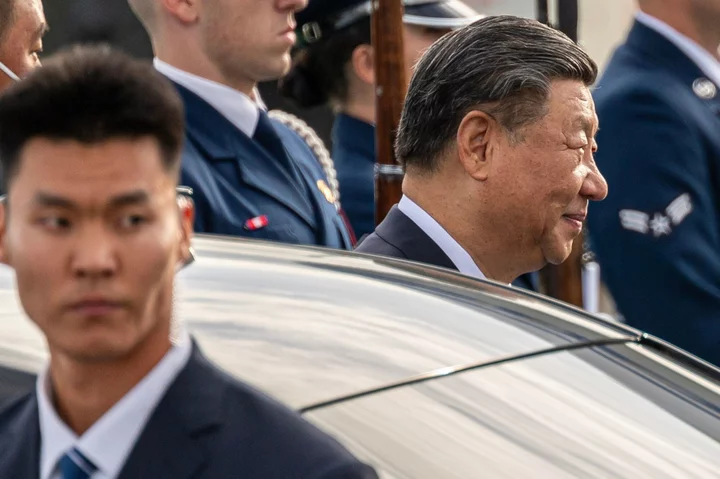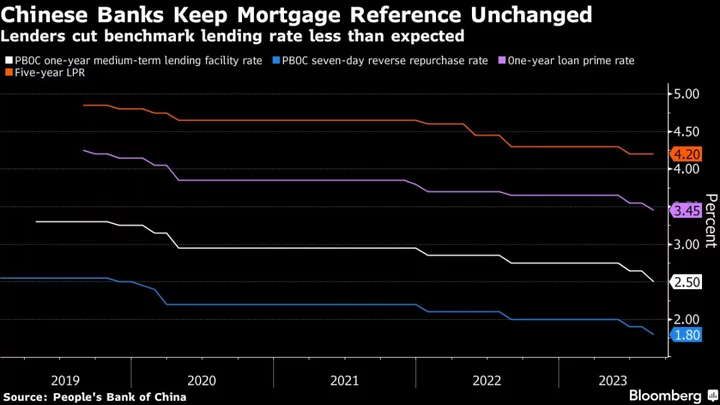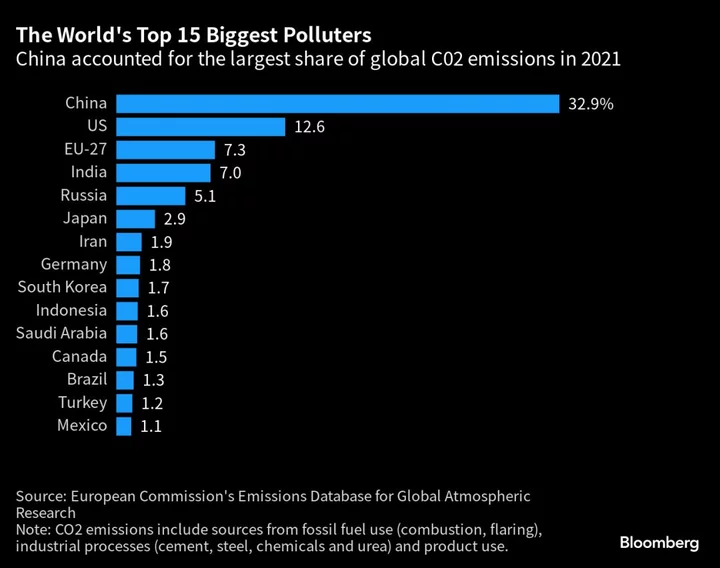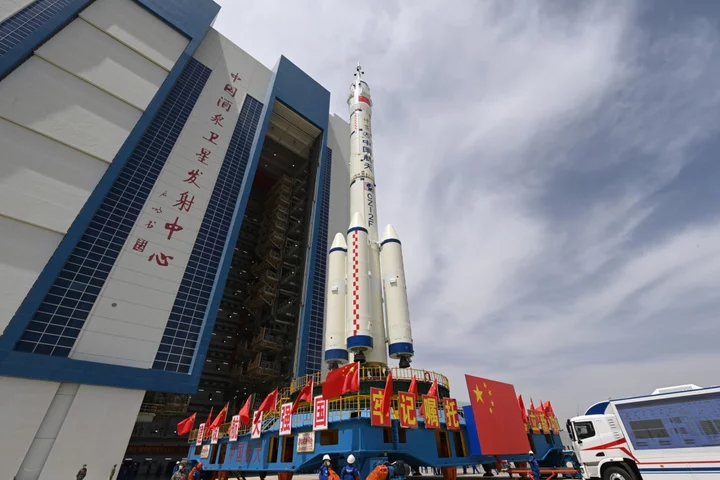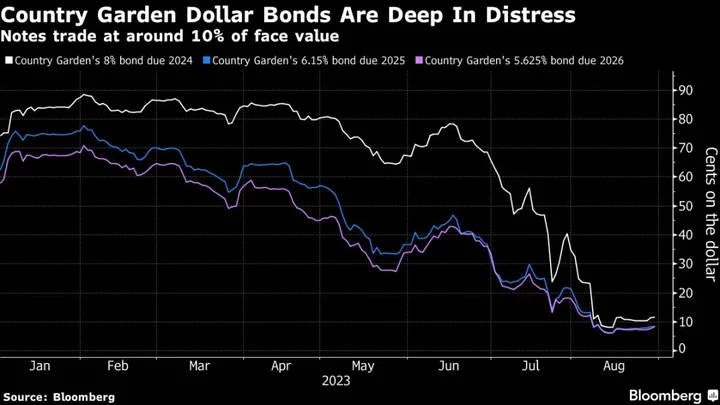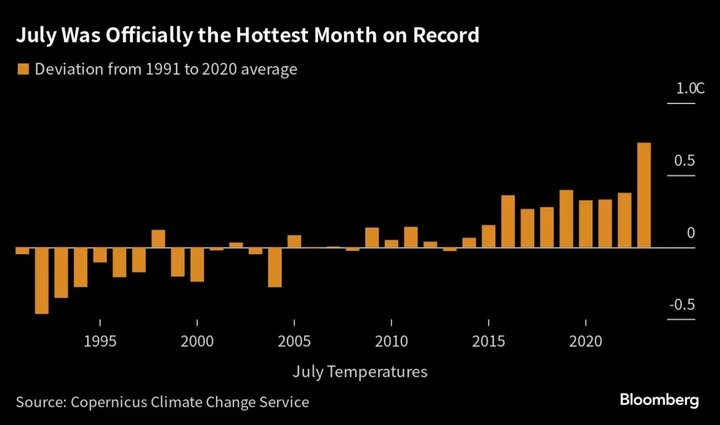(Bloomberg Markets) -- Money managers are navigating an historic shift: India’s population, at 1.43 billion, edged past China’s this year.
Now the world’s most populous country, India could experience a decades-long investment boom. Goldman Sachs Group Inc. analysts expect its share of global equity market capitalization to quadruple between now and 2075—reaching 12%, when it will be neck and neck with China’s. (Over that same period, the US share is projected to drop by half, to 22%.)
India and China both offer investors the chance to profit from rising powers’ economic growth. China is the world’s second-largest economy, featuring a massive consumer market and advanced manufacturing. India has friendlier relations with the West and a young workforce. Its economy is expected to grow 6% to 7% a year, outpacing China’s. Its budding middle class will be spending well beyond essentials.
Conrad Saldanha, a portfolio manager focusing on emerging-markets equity at Neuberger Berman, says India will benefit as companies look for manufacturing alternatives to China. “India is probably singularly one of the best structural growth stories globally,” he says. For Sukumar Rajah, a director of portfolio management at Franklin Templeton, India’s increased consumer spending, including on premium products, will open up new investment opportunities.
But Hugues Rialan, chief investment officer for Asia at Pictet Wealth Management, says Indian stocks are expensive. The country’s equity benchmarks have gained in every single year from 2016 through 2022. “Over the next 12 to 24 months, we prefer China given that we expect the economy to reaccelerate and its equity valuations are low today,” he says.
While it’s not necessarily a binary choice, investors are increasingly comparing the two giant Asian markets as they decide where to place bets. Read on to see which sectors and stocks are likely to benefit from the demographic shift. Interviews were conducted in June and have been edited for clarity and length. —With John Cheng, Jiyeun Lee, Ishika Mookerjee, Hideyuki Sano and Yiqin Shen
Mark Mobius
Partner and co-founder, Mobius Capital Partners, Dubai
Over the long term, India’s macro factors are more favorable because of demographics, as well as specific companies’ growth prospects. Picking stocks in India is all about technology and digitization. We like APL Apollo Tubes Ltd., whose steel structures are used to construct buildings, and Metropolis Healthcare Ltd., a medical testing firm. We also like software company Persistent Systems Ltd. and digital mapping company CE Info Systems Ltd., as well as Dreamfolks Services Ltd., which offers services at airports. China will not achieve the high growth of the past, and thus opportunities will be limited. Nevertheless, it’s an enormous market, and there will certainly be pockets of opportunities.
Michael Oh
Portfolio manager, Matthews Asia, San Francisco
We are overweight both markets. This is not a zero-sum game. Demographically, India is in a better place. However, given the size of the Chinese market, it remains very important. For India, I like banks, as consumers still lack basic financial services. ICICI Bank Ltd. is well positioned to benefit. I would avoid state-owned enterprises in general and focus on privately owned businesses.
I am not too worried about China’s aging population yet, since it can still improve productivity and income levels. If gross domestic product per capita can grow from around $10,000-$12,000 currently to $20,000-$30,000, there will be tremendous growth. Top Chinese stock picks are KE Holdings Inc., which handles housing transactions and services, and Trip.com Group Ltd., an online travel agency.
Hiren Dasani
Managing director, Goldman Sachs Asset Management, Singapore
Both markets will follow their own dynamics. Investors may rotate from one market to the other, but over time both should do well. India for us is a long-duration, stronger-for-longer kind of growth story. It’s one of those markets which gives a combination of three critical things—scale, growth and profitability.
China was all about exports, infrastructure and real estate. Going forward, it will focus more on domestic consumption as the next growth driver. We certainly believe there is a lot of pent-up savings and demand. [As of the end of May, top China holdings in Goldman’s emerging-markets equity portfolio included Tencent Holdings and Alibaba Group Holding, the nation’s two largest internet companies, as well as liquor maker Kweichow Moutai, according to data compiled by Bloomberg.]
Ayaz Ebrahim
Emerging-markets and Asia Pacific equities portfolio manager, JPMorgan Asset Management, Hong Kong
Fundamentally, we like both markets. But over the next year or so, purely on valuations, we have a bit of preference for China. We like the theme of industrial upgrade and companies that have moved up the value chain. We see companies in health care as well as renewable energy that are embracing new technology to evolve.
In India, we favor the financials, especially private banks and insurers. The economy is growing strongly, and an expanding middle class will continue to increase demand for financial products and services. The other area we like is the consumer sector, due to a growing population and higher spending power. [Top holdings in the JPMorgan India fund as of May 31 were financials ICICI Bank and Housing Development Finance Corp., as well as Infosys, an information technology company.]
Cecilia Chan
Chief investment officer for Asia Pacific, HSBC Asset Management, Hong Kong
India will be a bright spot because of its booming population, growing affluence, structural reforms and good policy mix. We particularly favor the real estate sector, where there is improving affordability, strong demand, robust launches and sales. We also like the financial sector, especially the largest private banks. [As of May 31, top holdings in HSBC’s Indian equity portfolio included HDFC Bank and ICICI Bank, as well as conglomerate Reliance Industries.]
As China ages, technology has the potential to enhance the quality of life. We favor communication services, information technology and industrials and also find opportunities in state-owned enterprises. [As of May 31, top holdings for HSBC’s Chinese stock portfolio included Tencent, Alibaba and online gaming company NetEase.]
Jason Pidcock
Investment manager for Asian equity income, Jupiter Asset Management, London
India’s huge, young population is a powerful driver of growth. While still a developing country, there’s no doubt India is in many respects a cutting-edge digital economy. We think the consumer, financials and utilities sectors will benefit the most from India’s demographic dividend. But you have to be very selective within them. [As of May 31, the top holding for Jupiter Asia Pacific Income Fund was Indian cigarette maker ITC Ltd.]
We own no mainland Chinese companies. The geopolitical tensions between China and not just the US, but also Japan, South Korea and Europe, are likely to increase in the coming years. We don’t favor the domestic situation with the government taking a greater influence over the likes of Tencent and Alibaba.
Vishnoi and Yang cover Asia equities for Bloomberg, Vishnoi from Singapore and Yang from Hong Kong.
--With assistance from John Cheng, Ishika Mookerjee, Hideyuki Sano and Yiqin Shen.


